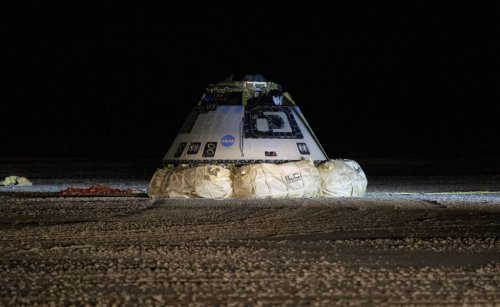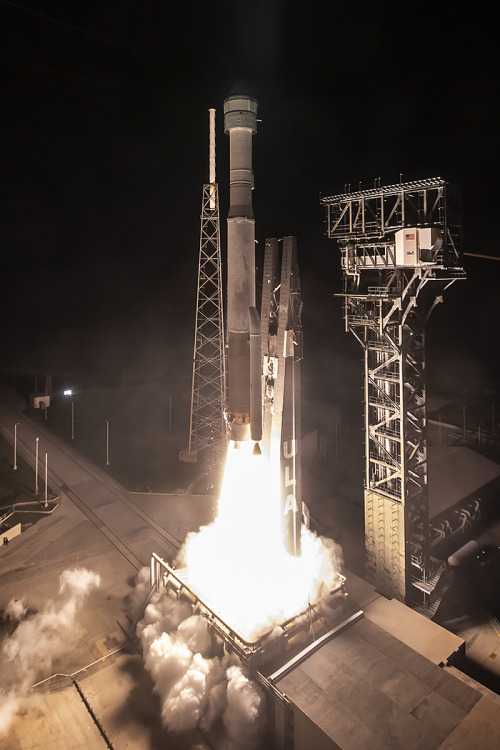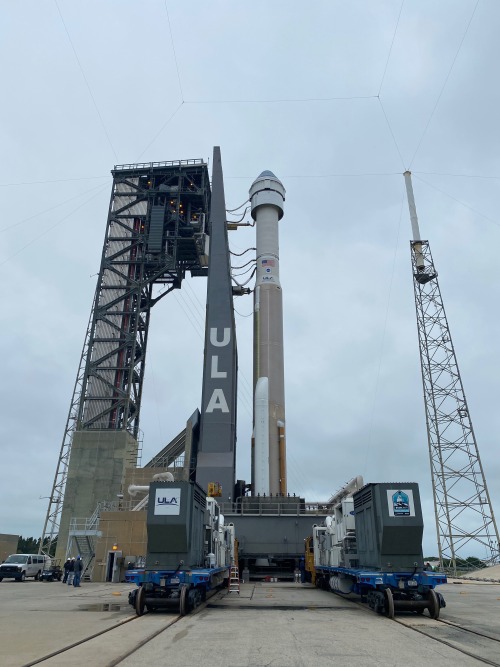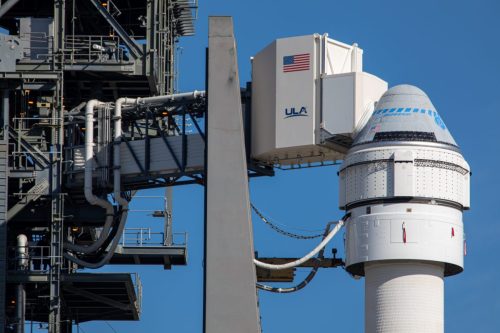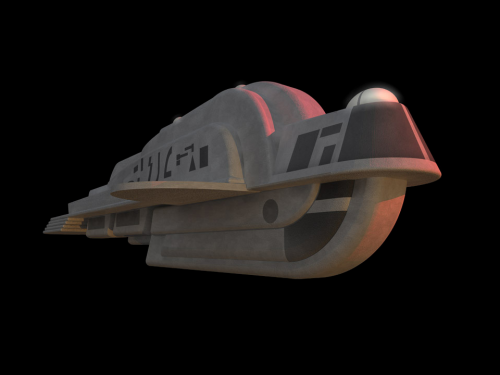#starliner
Calypso Starliner returns to earth after shortened Orbital Flight Test (December 22, 2019).
Following a shortened, 49 hour, 21 minute flight in space, Boeing’s Starliner Calypso safely landed at the White Sands Space Harbor in New Mexico yesterday, December 22, 2019. A 55 second burn of the capsule’s Orbital Maneuvering and Attitude Control engines occurred at 7:23 am EST, with landing at White Sands 34 minutes later at 7:57 am.
Ground and air-based images captured critical events in the capsule’s entry, descent and landing, including the successful deployment of all three drogue and main parachute canopies, heat shield jettison, and airbag deployment.
Starliner’s November 4 pad abort test raised concerns when only two of the three parachutes unfurled, though Boeing stated that the capsule could land on two in an emergency without an additional risk to the crew.
Recovery operations began once ground teams approached the capsule, installing an inflatable environmental shield and opening the spacecraft’s hatch. This marked the first time Boeing teams have practiced recovery operations on a space-flown capsule, and paves the way for procedures on future crewed flights.

Boeing recovery forces work to secure the Starliner Calypso after a successful landing at White Sands Space Harbor in New Mexico. Photo: NASA.
NASA astronaut Suni Williams, who will command the same Starliner capsule that flew the OFT mission in late 2020, was given the honor by Boeing to name the returned capsule. She christened the spacecraft ‘Calypso’ after Oceanic explorer Jacques Cousteau’s famous ship.
“A little homage to other explorers and the ships they rode on, I think we are going to call her ‘Calypso.’ Of course I love the ocean,“ said Williams, an avid diver as well as astronaut. “I love what the ocean means to this planet, we would not be this planet without the ocean. There is so much to discover in the ocean and there is so much to discover in space. It just seemed like a natural marriage.”
Shortly after her statement, NASA Administrator Jim Bridenstein confirmed Williams’ choice, officially dubbing the capsule Calypso for the first operational Starliner mission, known as PCM-1.
Calypso’s landing marks only the second time an orbital vehicle has landed at White Sands Space Harbor. The first was space shuttle Columbia following the STS-3 mission in 1982.

Boeing’s Starliner launches to orbit at 6:36am EST from SLC-41 at Cape Canaveral Space Force Station.
Starliner lifted off from SLC-41 atop a ULA Atlas V N22 rocket at 6:36am EST Friday, December 20, from Cape Canaveral Space Force Station in Florida. The capsule was supposed to rendezvous with the International Space Station for a weeklong visit Saturday, but an 11-hour offset error in the Mission Event Timer caused an incorrect orbit to be achieved. This, in turn, depleted too much of Starliner’s fuel reserves, forcing NASA. and Boeing managers to call off the rendezvous.
However, in a joint press conference Saturday between NASA and Boeing, managers stated that the remainder of the capsule’s systems were performing flawlessly and that most of the other test objectives of the OFT mission could be completed.
Boeing will transport Calypso back to the Commercial Crew and Cargo Processing Facility at Kennedy Space Center within the next two weeks. Starliner will then undergo a thorough analysis of all its hardware to see the effects of orbital flight as well as to understand fully the root cause of the Mission Elapsed Timer anomaly. Boeing expects to have concluded this process by late spring next year, with the Crewed Fight Test to occur sometime over the summer.
P/c: NASA.
Post link
Inaugural Starliner mission cut short as computer anomaly nixes ISS rendezvous. (December 21, 2019)
Boeing’s CST-100 Starliner capsule launched on its maiden voyage to space Friday morning, beginning the final phase of testing before flying American astronauts aboard. However, shortly after being deployed from the Atlas V launch vehicle, a problem with the capsule’s Mission Elapsed Timer caused the spacecraft to enter the wrong orbit. This ultimately forced NASA to call off its rendezvous with the International Space Station and return to Earth at the earliest possible opportunity.
Lifting off from Cape Canaveral’s SLC-41 at 6:36AM EST, Starliner’s ascent went according to plan, with separation of the twin AJ-60A solid rocket motors, core stage jettison, and aeroskirt jettison all occurring on schedule.
Fourteen minutes after launch when the Centaur Upper Stage deployed the capsule in orbit is when the anomaly occurred. Starliner’s Mission Elapsed Timer - an onboard computer that controls the spacecraft’s automatic sequence of events – thought the mission was at a different point in space and a different point in the timeline.
This caused the vehicle’s 20 Orbital Maneuvering and Attitude Control (OMAC) engines to fire for the full duration of the 40-second Orbital insertion burn nearly 14 minutes before it was actually supposed to happen.
Controllers at Boeing’s Mission Control Center (BMCC) noticed the error and sent the spacecraft a new set of instructions. However, a brief gap in communications between Starliner and NASA’s Tracking and Data Relay Satellites caused the signal to never be received. Ultimately, Starliner burned 25% more propellant than was intended, forcing NASA and Boeing mission managers to call off Saturday’s planned rendezvous and docking to the International Space Station.
At a postlaunch briefing, NASA Administrator Jim Bridenstein and Boeing’s Jim Chilton stated that Starliner would still perform a shortened orbital shakedown cruise before returning to the White Sands Space Harbor landing site early Sunday morning. Bridenstein stated that further analysis of the Mission Elapsed Timer anomaly would determine whether or not Boeing would need to fly a second uncrewed test before the crewed CFT-1 mission in 2020.

Diagram of the Atlas V N22 launch vehicle. N22 denotes that Atlas will be flying without a payload fairing, two solid rocket boosters, and a dual-engine Centaur Upper Stage. Credit: Boeing.
A unique launch profile and rocket.
Starliner’s ascent to orbit was flawless. It was the first flight of the Atlas V N22 launch vehicle, which featured a number of upgrades to improve the vehicle for Human flight. An Emergency Detection System was installed to autonomously monitor the vehicle’s health during all portions of ascent, and could abort the capsule in the event of a malfunction.
Additionally, a 1.8 meter aeroskirt was installed on the Launch Vehicle Adapter directly aft of the Starliner service module. This better streamlined the rocket’s aerodynamic profile during ascent and kept acoustic loads within safe parameters.
In order to keep acceleration loads – known as G-forces – to a safe level for humans, Boeing required ULA to design a unique ascent profile for the rocket. All Atlas V missions with Starliner will see the vehicle ascend on a much shallower trajectory than normal Atlas V launches. This also means that astronauts are able to abort from the rocket at any portion of the flight, a requirement of NASA’s.
To accommodate for the reduction in launch vehicle efficiency caused by this unique trajectory, ULA employed two RL-10 engines on a dual-engine Centaur Upper Stage for the first time. Dual Engine Centaur’s were commonplace on previous Atlas variants, with 166 flights between 1962 and 2004, but have never flown on an Atlas V.
Once Centaur deploys Starliner 14 minutes and 55 seconds after launch, the capsule is just 80 kilometers per hour shy of orbital velocity. Sixteen minutes later, the spacecraft’s 20 OMAC engines fire for 40 seconds to provide the final kick to orbital velocity while simultaneously circularizing the orbit to an altitude of 181 kilometers.
Below, a diagram of the CST-100 Starliner capsule showing the spacecraft’s major components. Credit: Boeing.

Watch a replay of Boeing’s Starliner launch broadcast below:
P/c: ULA/NASA.
Post link
Inaugural Starliner flight arrives at launch pad. (December 18, 2019)
With countdown clocks ticking towards the first test of Boeing’s Starliner capsule, the United Launch Alliance rolled the Atlas V vehicle to SLC-41 Wednesday morning. Starliner’s maiden voyage is scheduled to liftoff on an eight-day shakedown cruise to the International Space Station at 6:36am EST Friday, December 21.
The 45th Space Wing, based at Cape Canaveral Air Force Station, gives an 80% change of acceptable weather conditions for the instantaneous launch window.
Starliner is one of two capsules developed as part of NASA’s Commercial Crew Program, along with SpaceX’s Dragon. Both companies received contracts totaling $6.8 billion in 2014 to develop the first new crewed American spacecraft since the Space Transportation System in the mid-1970s.
Starliner’s Orbital Flight Test marks the second flight of the program and first orbital flight. The capsule tested its abort capabilities during a Pad Abort Test at the White Sands Missile Range November 4.
OFT-1 marks the first time an Atlas vehicle has launched a crew-capable spacecraft since the flight of Faith 7 and Mercury-Atlas 9 in May, 1963. It will also mark the first launch of a crew-capable spacecraft from Cape Canaveral Air Force Station since Apollo 8 in December, 1968. The Atlas V will be flying in the new N22 configuration, denoting Starliner replacing a payload fairing, two solid rocket boosters and a dual-engine Centaur upper stage.

P/c: NASA/ULA/Boeing
Post link
A 3D digital model by Gavin Rymill of the Hyperion III from the 1986 Doctor Who serial “The Trial of a Time Lord.”
Seeing this picture makes me a little sad. A fan artist on a Doctor Who forum I visited in the 2000s posted a much more impressive rendering of the same ship, complete with a starfield and nebula background. I didn’t save the image, or even note the artist’s name, and I’ll probably never find it again.
Post link


